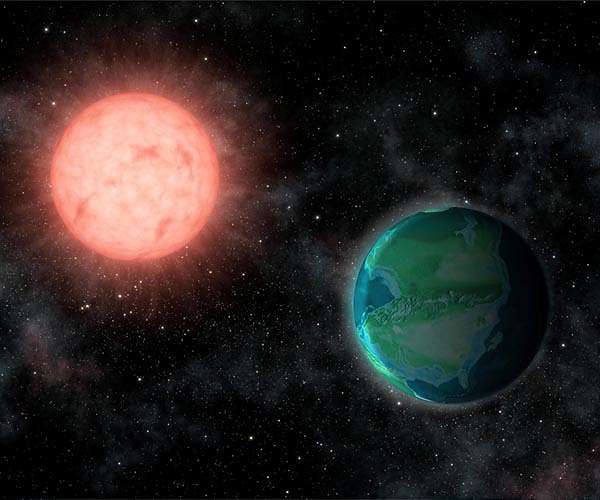12.09.2023

"HWO has the potential to transform our understanding of systems over a wide range of scales and across all areas of astrophysics," said Scannapieco. "It's fantastic to be working with the START to maximize the science impact of this uniquely powerful observatory."
NASA recently announced the selection of the Science, Technology, Architecture Review Team (START) to include Arizona State University professors Evan Scannapieco and Evgenya Shkolnik of the School of Earth and Space Exploration.
"Pathways to Discovery in Astronomy and Astrophysics for the 2020s," undertaken by the Decadal Survey on Astronomy and Astrophysics 2020 (Astro2020) Steering Committee, lays out the visionary plan for the upcoming decade with recommendations on the next generation of space telescopes.
"I am thrilled that professors Shkolnik and Scannapieco have been selected to participate in this critical early effort to mature the concept for NASA's Habitable Worlds Observatory," said Meenakshi Wadhwa, director of the School of Earth and Space Exploration (SESE). "The involvement of these SESE faculty in helping to define the science scope of this observatory speaks to our school's tremendous interdisciplinary strengths in astrophysics and astrobiology."
The START group was formed by NASA for the Habitable Worlds Observatory (HWO) to establish the science potential and scope of science for the observatory. The 2020 Astrophysics Decadal Survey appointed HWO as the NASA Astrophysics flagship mission that will follow the Nancy Grace Roman Space Telescope.
The Astro2020 science objectives and goals for HWO will be defined by START, which is made up of experts in the areas of astrophysics, exoplanets, solar system science, science instrumentation, observatory design and development. The START will also be gathering input from the broader community.
Scannapieco is an astrophysicist whose research is focused on achieving a better understanding of feedback processes in galaxy formation and the evolution of the elements across cosmic time. His research group was one of the first to show that active black holes are likely to play a key role in the history of galaxy formation. Now, his group is measuring the heating of the gas around galaxies by comparing large cosmological simulations with observations at a wide variety of wavelengths.
"HWO has the potential to transform our understanding of systems over a wide range of scales and across all areas of astrophysics," said Scannapieco. "It's fantastic to be working with the START to maximize the science impact of this uniquely powerful observatory."
Shkolnik is an astrophysicist and an expert on exoplanets and stars, including the sun. She studies stellar activity and star-planet interactions using telescopes on the ground and in space to answer questions involving stellar evolution and planetary habitability. She is also now designing new small space telescopes dedicated to these experiments. Shkolnik also served on the Astro2020 Decadal Survey panel that recommended the Habitable Worlds Observatory to be NASA's next big flagship mission.
"It is wonderful to be part of the team that will start defining the ambitious science goals for NASA's upcoming Habitable Worlds Observatory," Shkolnik said. "It will take two decades before HWO is ready to collect photons, and there is much work to get us from here to there. Being on the ground floor, building upwards for a mission of this scale is extraordinarily exciting."
The number of applicants interested in joining the 28-member START group far exceeded the number of individuals that NASA could select. The selection process focused on the relevance of the expertise of the individual candidates to START activities and the diversity of backgrounds and knowledge to support and meet the START group's objectives and goals.
The Great Observatory Maturation Program (GOMAP) will focus on several key early activities to ensure future flagship telescopes, starting with HWO, are developed on a predictable cost and schedule while minimizing risks of overruns. GOMAP's coordinated activities will ensure the scope of HWO is clearly defined, will advance the technologies that will enable HWO to deliver its revolutionary science, and plan additional steps that may be taken for long-term preparation.
"These teams will bring together a diverse, experienced group of individuals to serve as community representatives," said Mark Clampin, director of the astrophysics division at NASA Headquarters in Washington, D.C. "We received an incredible amount of interest from the broader community, and the selected members are tasked with tapping into those perspectives to ensure they're well-represented in our efforts. We look forward to the work they will do to help advance NASA's exploration of the universe and search for life, and the capabilities they will help enable for the next generation of our field."
Quelle: SD

